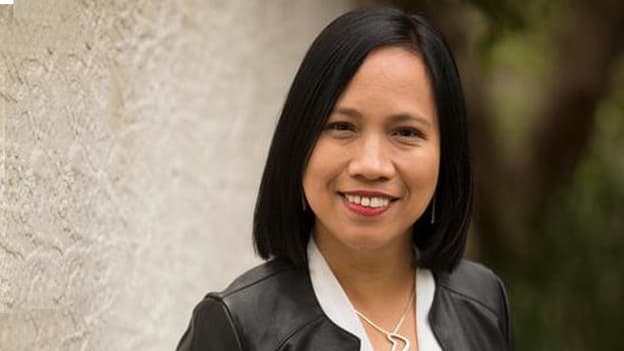Allyship must become part of the company’s DNA: Brenda Gaddi

A recent Harvard Business School report coined the term 'hidden workers' to reflect the missing talent pool in global hiring efforts. Despite the spotlight on DEI today, discrimination at the workplace still persists to exist. 60% women of colour experienced discrimination in the workplace related to their identity as a woman of colour, despite almost the same number (59%) of respondents saying their workplace has a Diversity & Inclusion policy in place, reveals a survey by Women of Colour Australia (WoCA).
Where is the gap? What are the missing pieces in the current DEI strategies of companies?
Brenda Gaddi, Managing Director and Founder, Women of Colour Australia (WoCA) talks about the missing link and shares how organisations can create a more inclusive workplace for underrepresented communities.
In your opinion, what is keeping underrepresented talent hidden despite the spotlight on DEI today? What's the missing link?
There is not one missing link. These are deeply rooted systemic and structural issues that need to be completely dismantled.
It is not a system that’s broken, but rather, it was built this way, to serve the specific purpose of maintaining white supremacy.
First Nations women, Women of Colour, migrant and refugee women continue to face unique struggles and inequalities at the hands of patriarchy and white supremacy, despite the widespread rhetoric of diversity and inclusion in the workplace. Most DEI programs and initiatives fail because they are approached with a White lens instead of an intersectional lens.
The reality that corporate Australia chooses to ignore is that women with diverse cultural identities do not spring from the same starting block as Anglo and/or European women. The additional challenges, barriers and constructs that First Nations women, Women of Colour, migrant and refugee women come up against in the workplace are often unscrutinised and unaddressed.
With the pace of change still slow, how can organisations better balance the needs of underrepresented communities across access to employment and career growth?
Women, and particularly women who are minoritised and racialised, have been historically underrepresented for years in many fields.
While women face many challenges in the uptake, retention and progression of their careers, Women of Colour experience double-edged challenges stemming from both their race and gender.
The Women of Colour who significantly contributed to different fields of study have gone without recognition for a very long time. It is only in recent years that their stories are being uncovered and are being rightfully acknowledged for their contributions.
Although there has been rather slow progress, the number of women in leadership positions remains very low. The figures are even grimer for Women of Colour, which is in part due to the fact that they are not offered the same career opportunities as their White peers despite being just as or more than qualified and experienced.
It is not enough for organisations to provide women with more access to resources and training. They have to also provide the right supportive culture where women can thrive. Building a culture of inclusion needs to be into the organisations’ DNA so it transpires in career frameworks, recruitment and talent retention strategies and all company policies.
How can organisations support women of colour in Australia, especially?
Only a few days ago, it was International Women’s Day - a day I feel more and more disconnected with. While gender equality in the workplace is rising higher up on the corporate agenda, Women of Colour are left behind.
The mainstream feminist movements that exist today are still deeply rooted in, and in favour of, white supremacy. Most feminist movements deliberately choose to focus only on issues that predominantly affect White women to advance their own representation across the board. True feminism needs to be intersectional.
The most important thing that White women can do to show their solidarity is to first acknowledge that they benefit from a system not designed for First Nations women, Women of Colour, migrant and refugee women.
They need to decentre themselves, make space for minoritised and racialised women for the advancement of all women. True allyship in feminist movements has the potential to move the needle and create transformative social impact for Women of Colour everywhere.
DEI will never truly be successful unless it decentres whiteness and gets approached from an intersectional lens. Through effective DEI, corporate Australia will be able to make space for minoritised and racialised women in the workplace so all women can be involved and bring their whole selves and identities to the workplace.
What role can mentoring and coaching play in supporting the career development of women of colour?
Our latest Women of Colour in the Australian Workplace report revealed that many of the 543 Women of Colour (7% of which are Aboriginal and Torres Strait Islander women) surveyed named ‘mentoring’ as a key need for future development in their careers.
Having access to a mentor and coach of colour can be a game changer for Women of Colour because it will provide a much needed safe space where we can collectively acknowledge, validate and honour each other’s lived experiences as Women of Colour navigating predominantly white ethnocentric workplaces.
What is the way forward for creating an inclusive employment ecosystem for women of colour in Australia? Who will be the key stakeholders driving this DEI agenda?
There are numerous reasons why most DEI initiatives fail but one of the critical keys to unlocking true inclusivity in the workplace is allyship. While allyship has to flow from the top, i.e it is something that leaders and managers have to buy into first, it is not solely their responsibility.
However, it’s up to them to create and nurture an environment where allyship becomes part of the company’s DNA.
Being an ally is often misunderstood as simply helping someone from a minoritised group or being on the same side as them and supporting their views. However, allyship is far more than just having a shared interest or being supportive. As described by global DEI leader Sheree Atcheson, an ally is “any person that actively promotes and aspires to advance the culture of inclusion through intentional, positive and conscious efforts that benefit people as a whole”.
Psychological safety is another key benefit that comes with a culture that fosters allyship. Psychological safety is the belief that a person will not be condemned, ridiculed or dismissed for speaking up with ideas, questions, concerns, or mistakes. When psychological safety is present in the workplace, employees don’t feel as if there will be any repercussions on their safety, sense of self, their status or position when they speak up, share feedback, admit to mistakes or that they don’t know something or express dissent.
It is time for Australian workplaces to recognise allyship as a potent aspect of their training and development strategies for women of colour.
Allies in the workplace can be DEI champions by serving as mentors or sponsors to employees from marginalised groups, who may experience discrimination, racism or sexism because of their gender, race, ethnicity, religion, sexual orientation, disability or other characteristic.
Australian organisations can empower employees to become true allies through deep listening sessions, ongoing racial sensitivity training, unconscious bias education and other culturally-aware and trauma-informed activities to create a more welcoming, inclusive and safe workplace where all employees feel they truly belong, including Women of Colour.















